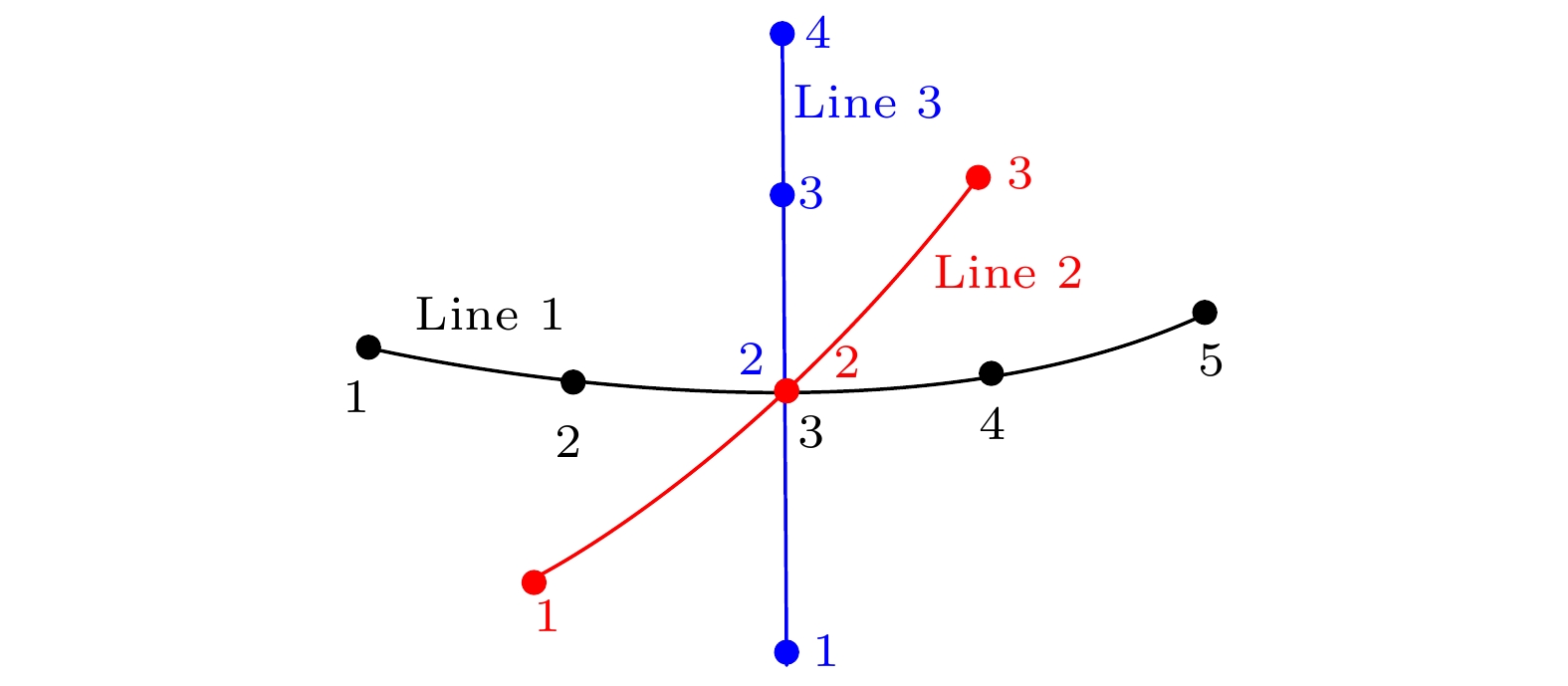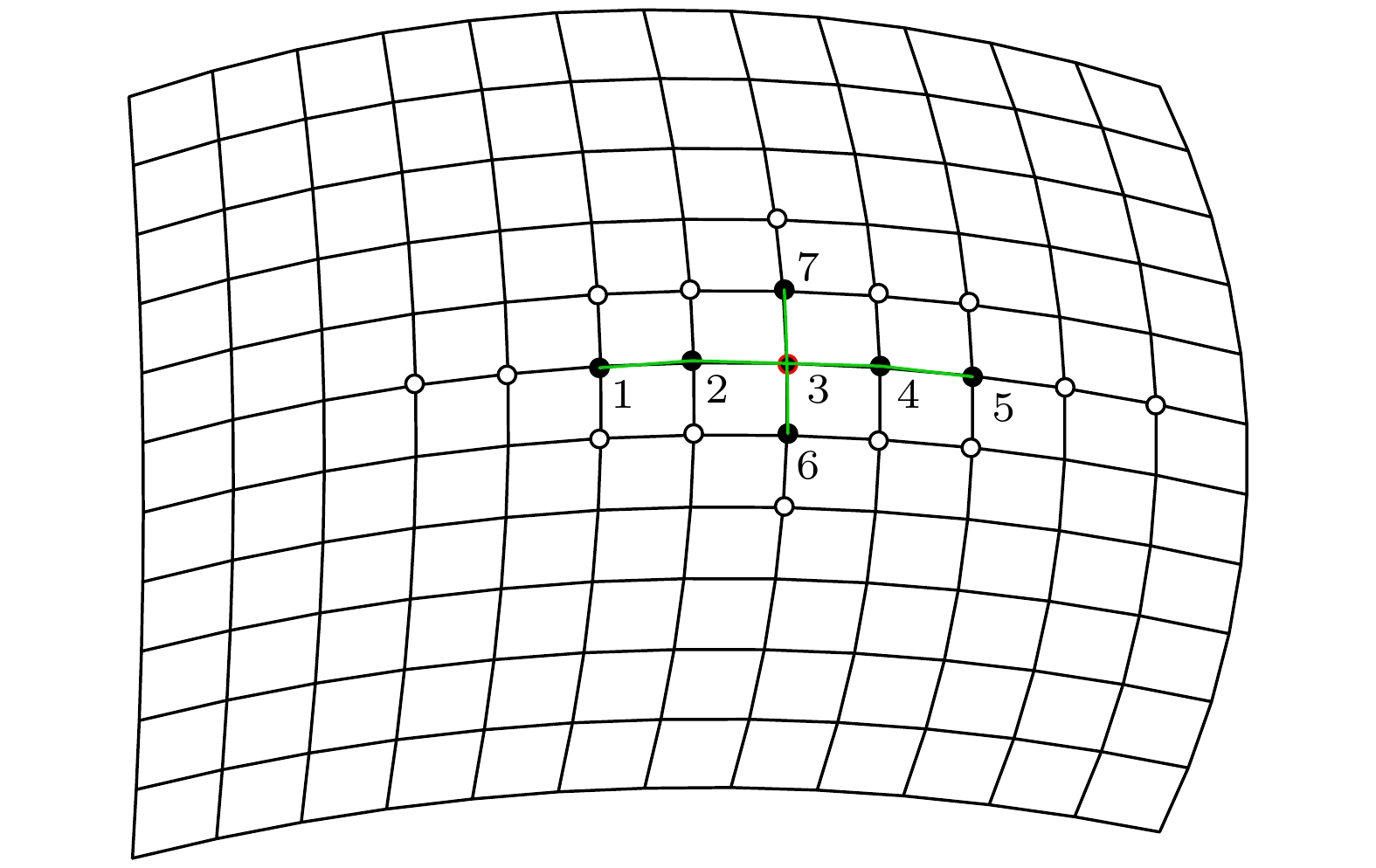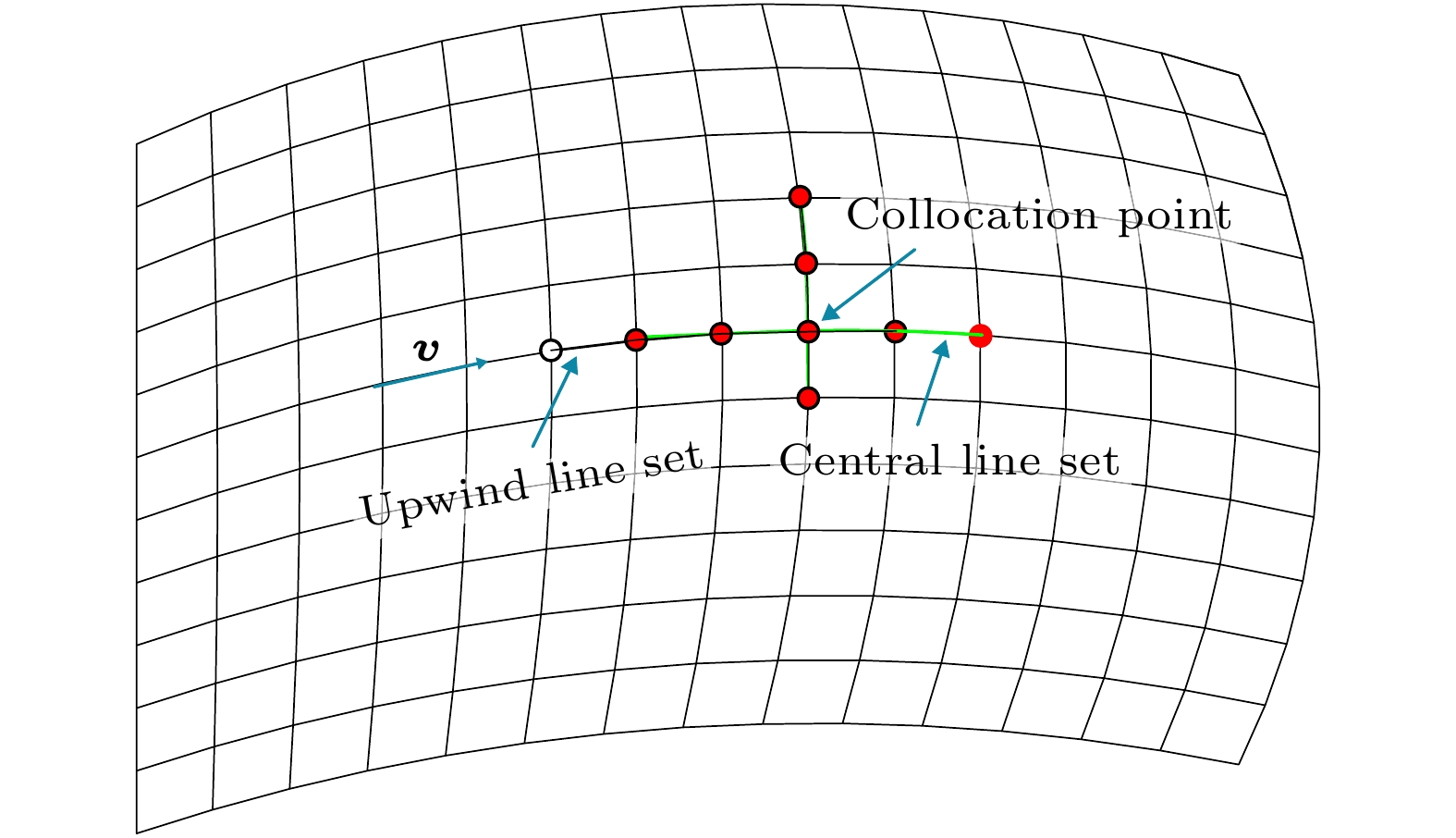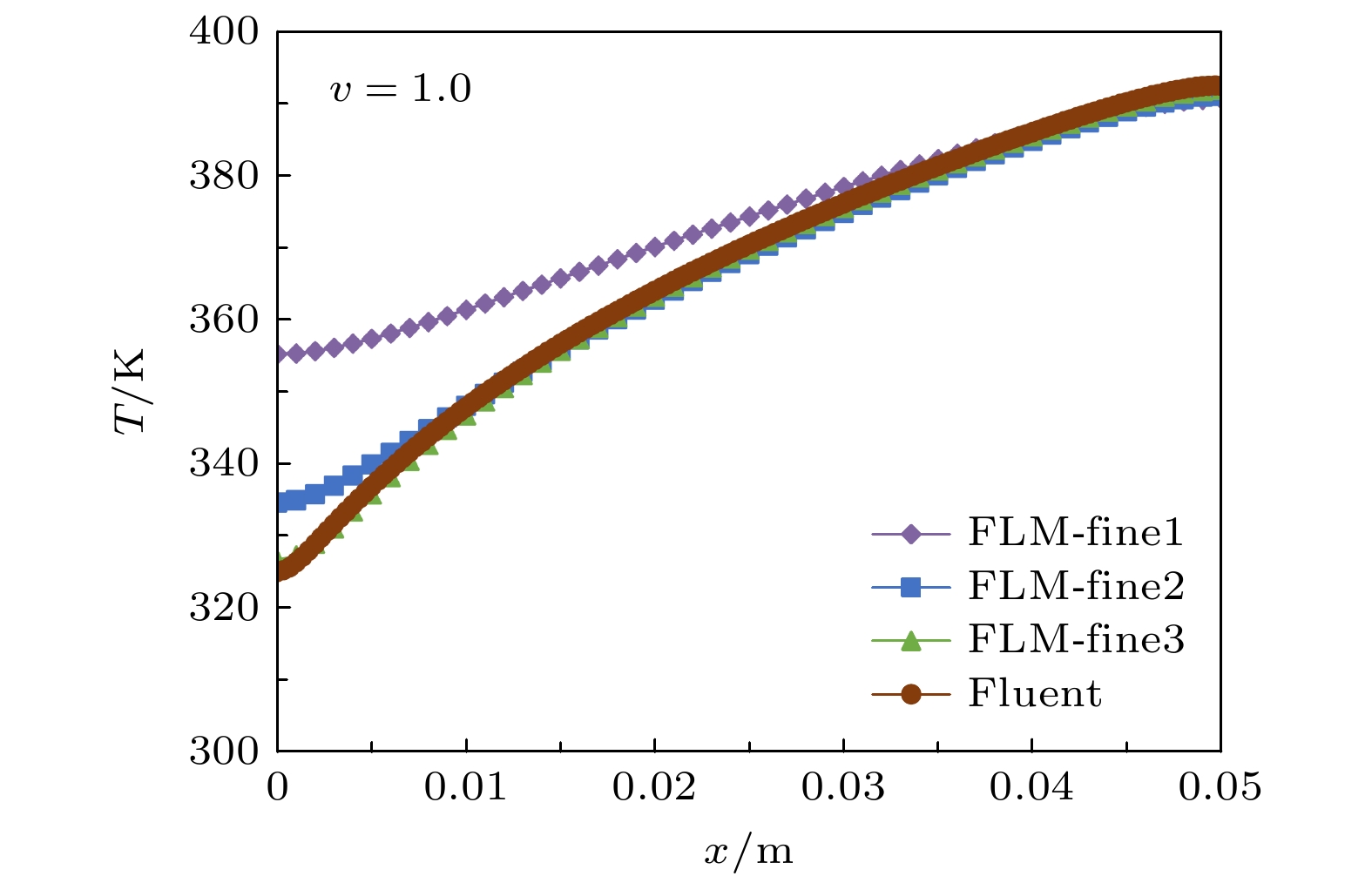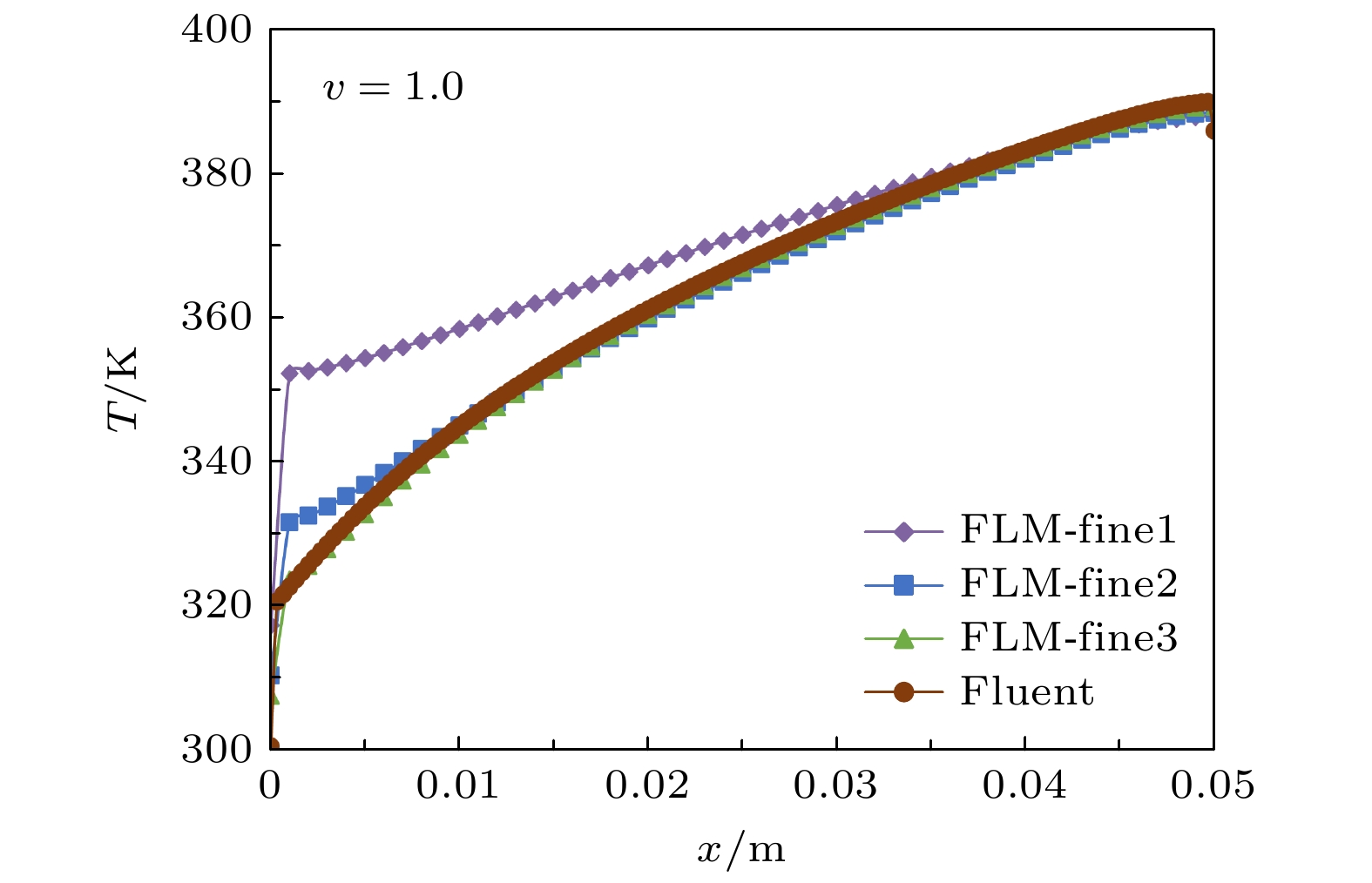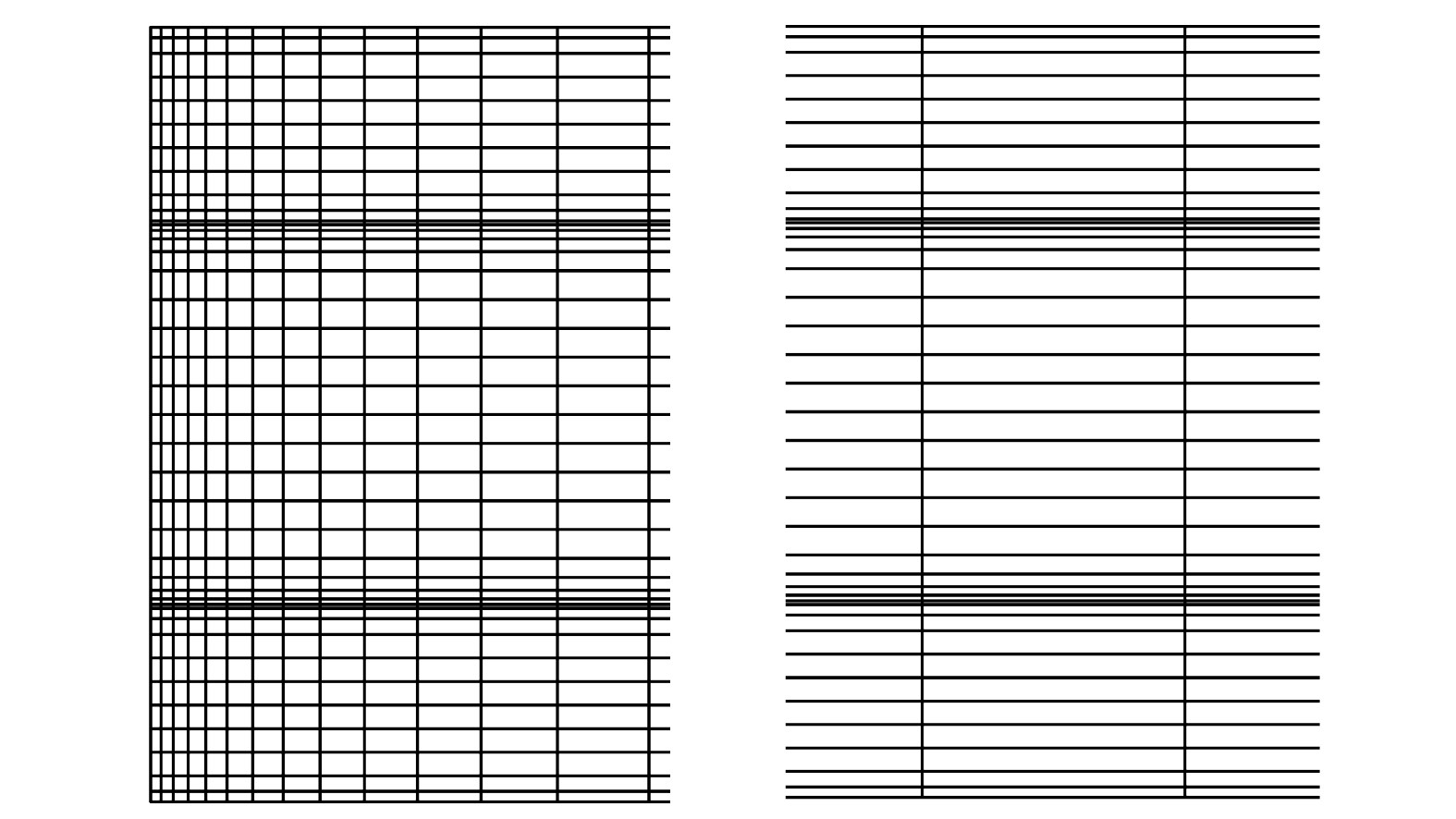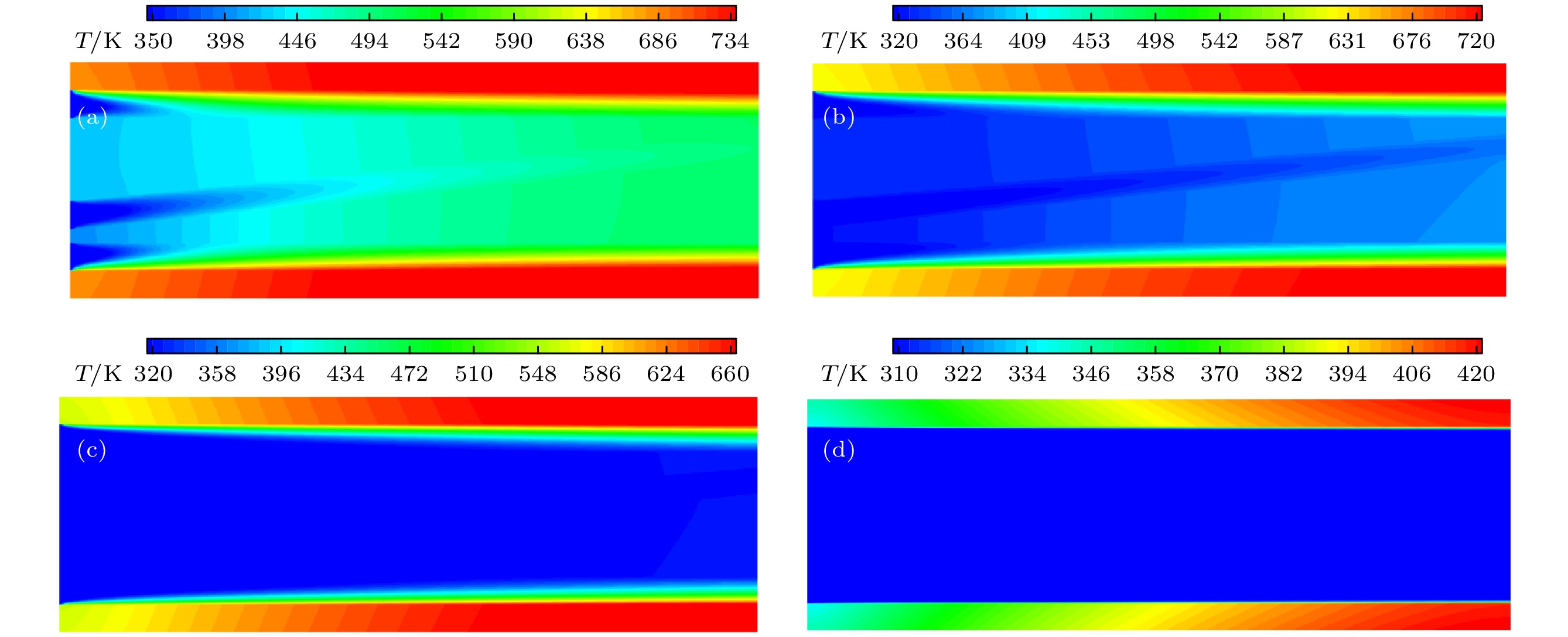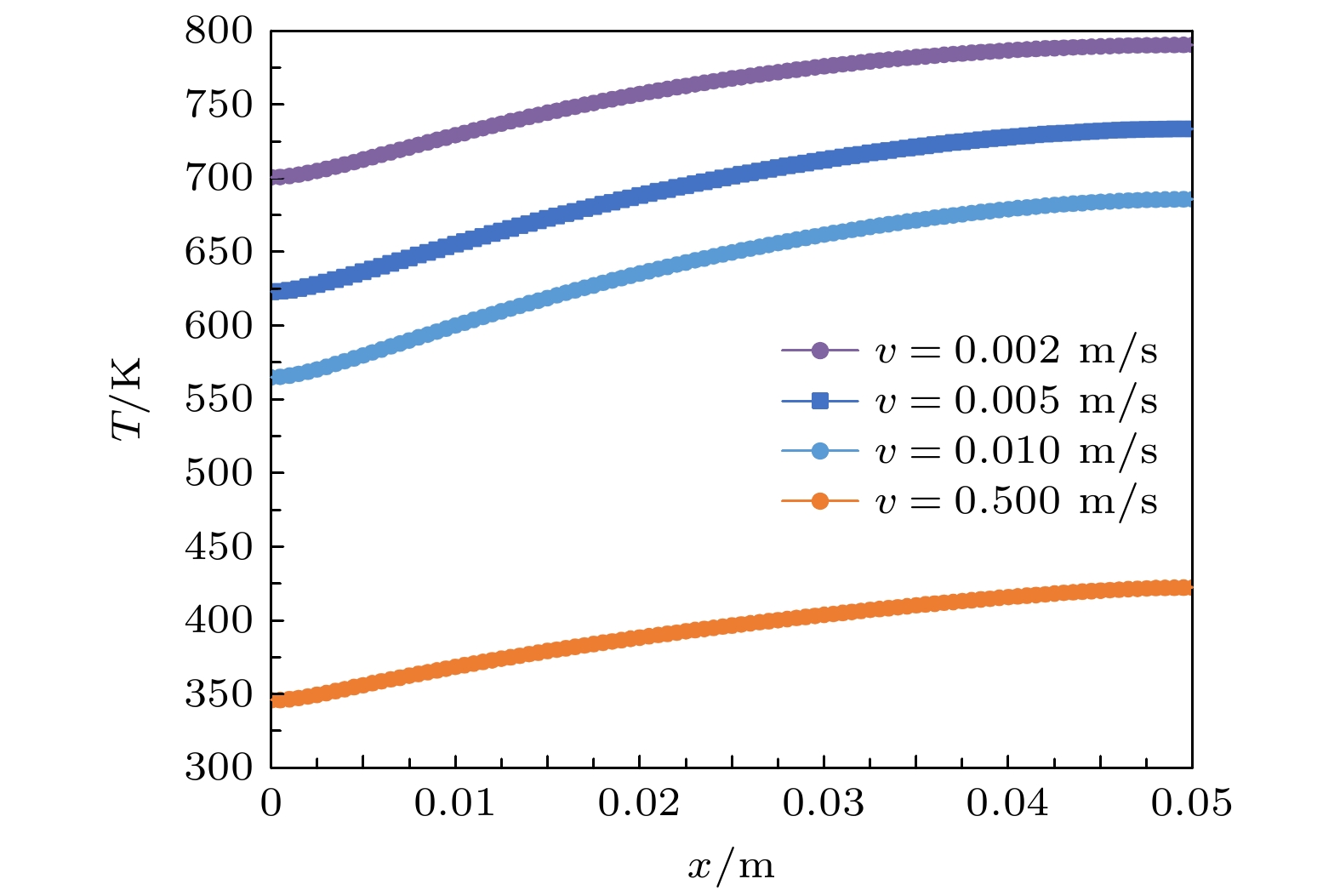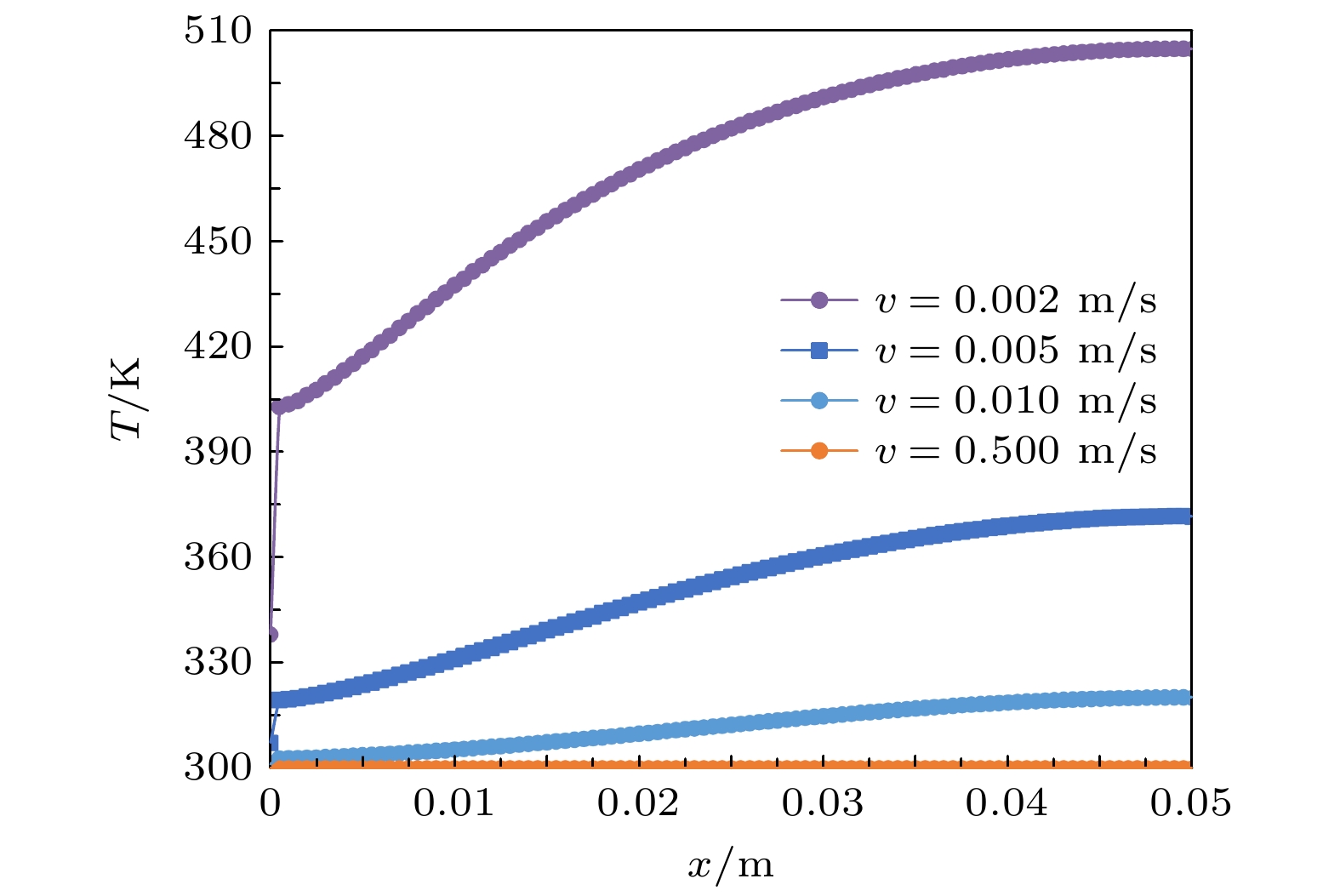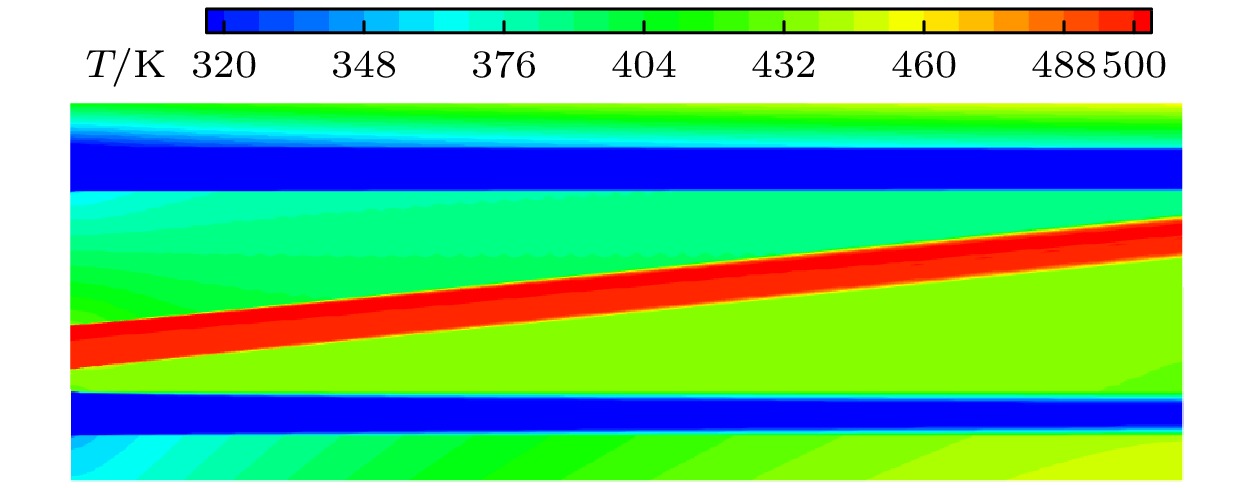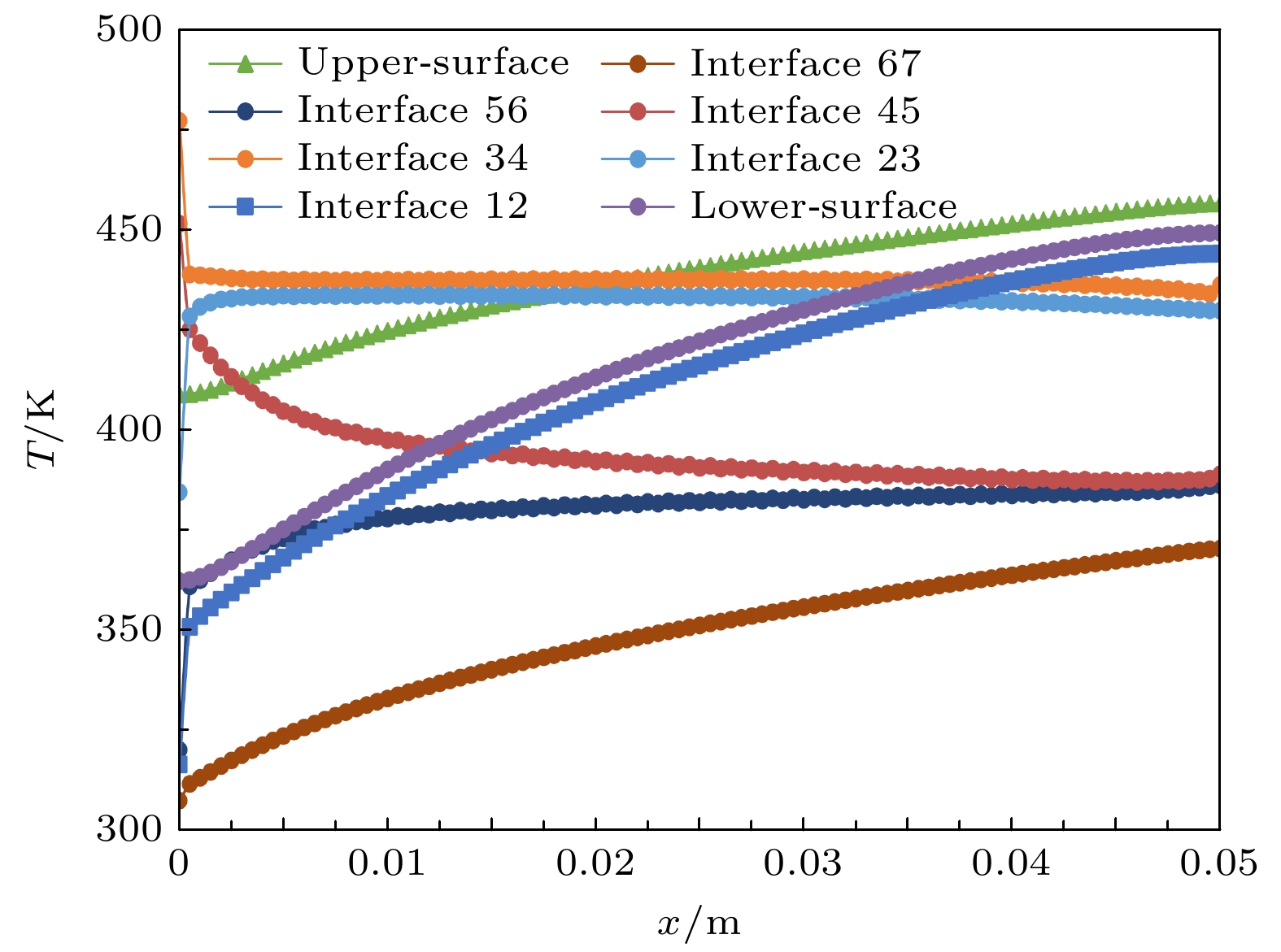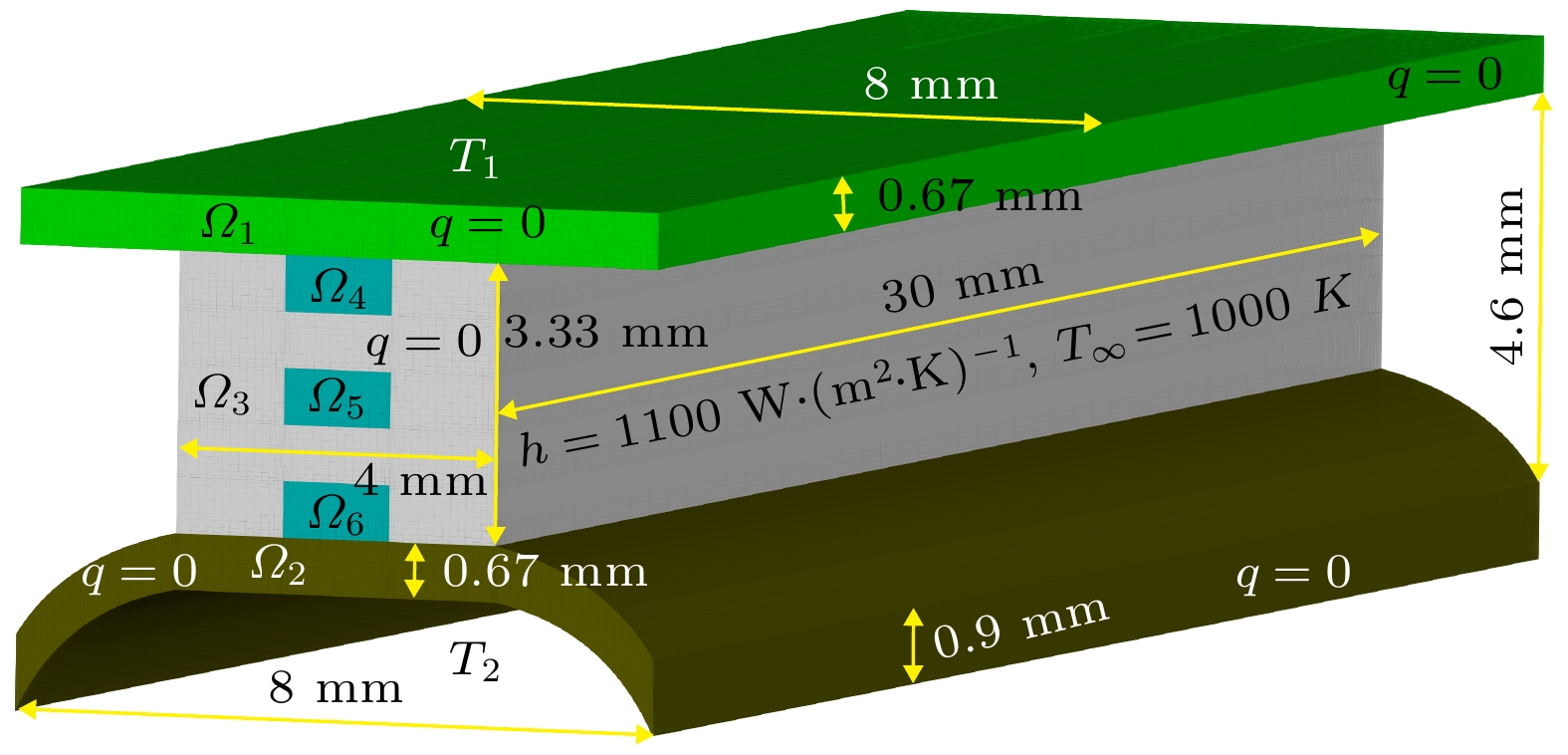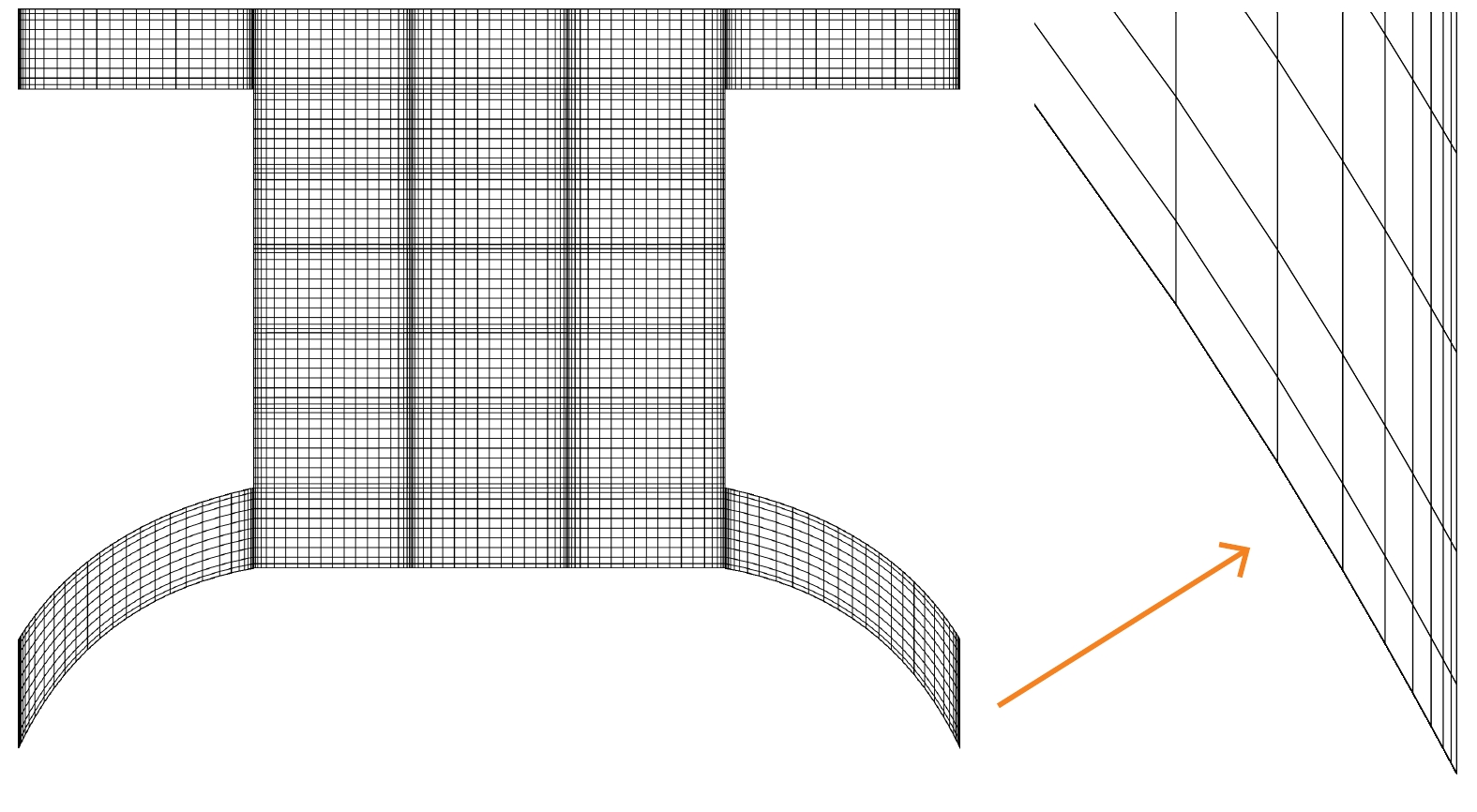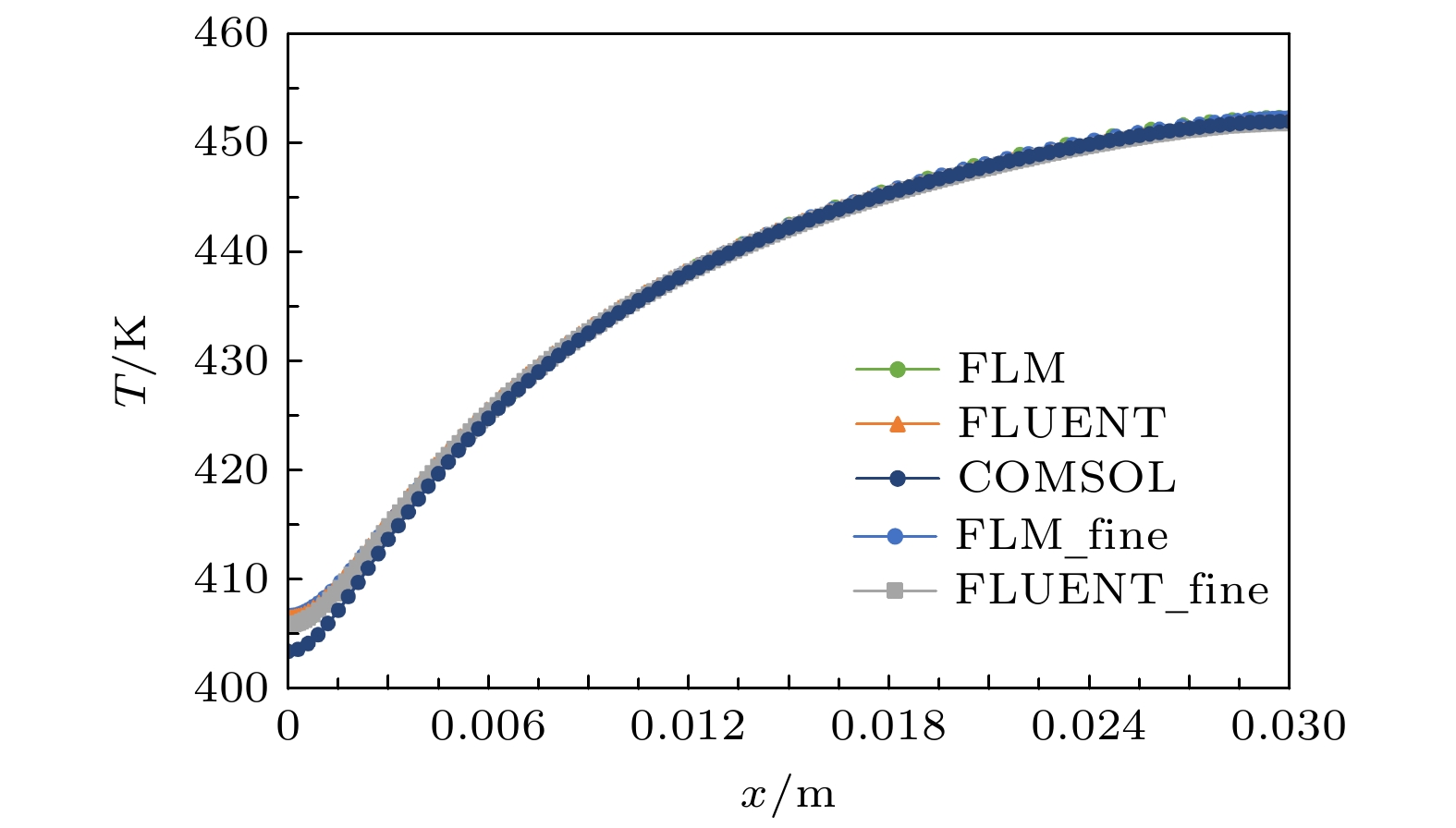-
In this paper, a completely new numerical method, called finite line method, is proposed and is used to solve fluid-solid coupled heat transfer problems. The extensively used finite element method is a method based on volume discretization; the finite volume method is a method operated on the surface of the control volume; the boundary element method is the one based on boundary surface discretization; the meshless method is the one constructing the computational algorithm using surrounding scatter points at a collocation point. The method proposed in the work is based on the use of finite number of lines, in which an arbitrarily high-order computational scheme can be established by using only two or three straight or curved lines at each point. The creative idea of the method is that by using a directional derivative technique along a line, high-order two- and three-dimensional spatial partial derivatives with respective to the global coordinates can be derived from the Lagrange polynomial interpolation formulation, based on which the discretized system of equations can be directly formed by the problem-governing partial differential equation and relevant boundary conditions. The proposed finite line method is very simple in theory and robust in universality, by using which the boundary value problems of partial differential equations in solid and fluid mechanics problems can be solved in a unified way. In solving fluid mechanics problems, the diffusion term is simulated by using the central line set to maintain a high efficiency, and the convection term is computed by using an upwind line set to embody its directional characteristic. A few of numerical examples will be given in this paper for fluid-solid coupled heat transfer problems for verifying the correctness and efficiency of the proposed method.
-
Keywords:
- finite line method /
- collocation method /
- meshless method /
- finite difference method
[1] Zienkiewicz O C, Taylor R L, Fox D 2014 The Finite Element Method for Solid and Structural Mechanics (7th Ed.) (Butterworth-Heinemann: Elsevier)
[2] Zienkiewicz O C, Taylor R L, Nithiarasu P 2014 The Finite Element Method for Fluid Dynamics (7th Ed.)(Butterworth-Heinemann: Elsevier)
[3] Wen P H, Cao P, Korakianitis T 2014 Eng. Anal. Bound. Elem. 46 116
 Google Scholar
Google Scholar
[4] Li M, Wen P H 2014 Int. J. Numer. Methods Eng. 99 372
 Google Scholar
Google Scholar
[5] Gao X W, Huang S Z, Cui M, Ruan B, Zhu Q H, Yang K, Lv J, Peng H F 2017 Int. J. Heat Mass Transf. 115 882
 Google Scholar
Google Scholar
[6] Zheng Y T, Gao X W, Lv J, Peng H F 2020 Int. J. Numer. Methods Eng. 121 3722
 Google Scholar
Google Scholar
[7] 陶文铨 2001 数值传热学 (西安: 西安交通大学出版社)
Tao W Q 2001 Numerical Heat Transfer (Xi’an: Xi’an JiaoTong University Press) (in Chinese)
[8] Moukalled F, Mangani L, Darwish M 2015 The Finite Volume Method in Computational Fluid Dynamics: an Advanced Introduction with OpenFOAM and MATLAB (Cham: Springer)
[9] 姚振汉, 王海涛 2010 边界元法 (北京: 高等教育出版社)
Yao Z H, Wang H T 2010 Boundary Element Methods (Beijing: Higher Education Press) (in Chinese)
[10] 胡金秀, 高效伟 2016 物理学报 65 014701
 Google Scholar
Google Scholar
Hu J X, Gao X W 2016 Acta Phys. Sin. 65 014701
 Google Scholar
Google Scholar
[11] 张见明 2010 计算机辅助工程 19 5
 Google Scholar
Google Scholar
Zhang J M 2010 Comput. Aided Eng. 19 5
 Google Scholar
Google Scholar
[12] 袁驷 1992 数值计算与计算机应用 13 252
 Google Scholar
Google Scholar
Yuan S 1992 J. Num. Methods Comput. Applicat. 13 252
 Google Scholar
Google Scholar
[13] Gao X W, Liang Y, Xu B B, Yang K, Peng H F 2019 Eng. Anal. Bound. Elem. 108 422
 Google Scholar
Google Scholar
[14] 张雄, 宋康祖, 陆明万 2003 计算力学学报 20 725
 Google Scholar
Google Scholar
Zhang X, Song Z K, Lu M W 2003 Chin. J. Comput. Mech. 20 725
 Google Scholar
Google Scholar
[15] 王东东, 张汉杰, 梁庆文 2016 计算力学学报 33 605
 Google Scholar
Google Scholar
Wang D D, Zhang H J, Liang Q W 2016 Chinese Journal of Computational Mechanics 33 605
 Google Scholar
Google Scholar
[16] 程玉民 2015 无网格方法 (北京: 科学出版社)
Cheng Y M 2015 Meshless Methods (Beijing: Sciense Press) (in Chinese)
[17] Karageorghis A, Lesnic D, Marin L 2021 J. Eng. Math. 126 10
 Google Scholar
Google Scholar
[18] 傅卓佳, 习强, 黄河 2019 力学与工程——数值计算和数据分析 2019 学术会议论文集 第77页
Fu Z J, Xi Q, Huang H 2019 Mechanics and Engineering — Numerical Computation and Data Analysis Beijing, China, April 19–21, 2019 p77 (in Chinese)
[19] Lv J, Sheng G Y, Gao X W, Zhang H W 2015 Int. J. Comput. Methods 12 1550026
 Google Scholar
Google Scholar
[20] Dolejší V, Feistauer M 2015 Discontinuous Galerkin Method: Analysis and Applications to Compressible Flow (Cham: Springer)
[21] 高效伟, 彭海峰, 杨恺, 王静 2015 高等边界单元法 (北京: 科学出版社)
Gao X W, Peng H F, Yang K, Wang J 2015 Advanced Boundary Element Method (Beijing: Sciense Press) (in Chinese)
[22] 王勖成 2003 有限单元法 (北京: 清华大学出版社)
Wang X C 2003 Finite Element Method (Beijing: Tsinghua University Press) (in Chinese)
[23] 高效伟, 徐兵兵, 吕军, 彭海峰 2019 力学学报 51 703
 Google Scholar
Google Scholar
Gao X W, Xu B B, Lv J, Peng H F 2019 Chin. J. Theor. Appl. Mech. 51 703
 Google Scholar
Google Scholar
[24] Liu H Y, Gao X W, Xu B B 2019 Comput. Fluids 192 104276
 Google Scholar
Google Scholar
[25] Xu B B, Gao X W, Jiang W W, Cui M, Lv J 2019 Eng. Fract. Mech. 218 106575
 Google Scholar
Google Scholar
[26] Gao X W, Ding J X, Cui M, Yang K 2019 Eng. Anal. Bound. Elem. 109 117
 Google Scholar
Google Scholar
[27] Gao X W 2021 The 2021 International Conference on Applied Mathematics, Modeling and Computer Simulation (AMMCS 2021) Wuhan, China, November 13–14, 2021
[28] Gao X W, Liu H Y, Ruan B 2021 Comput. Struct. 243 106411
 Google Scholar
Google Scholar
-
表 1 各计算域的材料参数与入口边界条件
Table 1. Material parameters and boundary conditions of each computational domain.
$ {\varOmega _1} $ $ {\varOmega _2} $ $ {\varOmega _3} $ $ {\varOmega _4} $ $ {\varOmega _5} $ $ {\varOmega _6} $ $ {\varOmega _7} $ λ 100 0.6 200 0.6 200 0.6 10 $ {T_{{\text{in}}}} $ — 300 — 500 — 300 — v — 0.1 — 0.5 — 1.0 — 表 2 三维流固结构各计算域的材料参数与边界条件
Table 2. Material parameters and boundary conditions of each computational domain.
$ {\varOmega _1} $ $ {\varOmega _2} $ $ {\varOmega _3} $ $ {\varOmega _4} $ $ {\varOmega _5} $ $ {\varOmega _6} $ λ 10 20 200 0.6 0.6 0.6 $ {T_{{\text{in}}}} $ — — — 300 350 300 v — — — 0.2 0.5 0.2 表 3 三种计算方法的节点数与计算时间比较
Table 3. Comparison of total number of nodes and computational time for three methods.
FLM FLM_fine FLUENT FLUENT_fine COMSOL 总节点数 172789 582799 599519 4298589 570751 计算时间/s 38 135 115 910 585 -
[1] Zienkiewicz O C, Taylor R L, Fox D 2014 The Finite Element Method for Solid and Structural Mechanics (7th Ed.) (Butterworth-Heinemann: Elsevier)
[2] Zienkiewicz O C, Taylor R L, Nithiarasu P 2014 The Finite Element Method for Fluid Dynamics (7th Ed.)(Butterworth-Heinemann: Elsevier)
[3] Wen P H, Cao P, Korakianitis T 2014 Eng. Anal. Bound. Elem. 46 116
 Google Scholar
Google Scholar
[4] Li M, Wen P H 2014 Int. J. Numer. Methods Eng. 99 372
 Google Scholar
Google Scholar
[5] Gao X W, Huang S Z, Cui M, Ruan B, Zhu Q H, Yang K, Lv J, Peng H F 2017 Int. J. Heat Mass Transf. 115 882
 Google Scholar
Google Scholar
[6] Zheng Y T, Gao X W, Lv J, Peng H F 2020 Int. J. Numer. Methods Eng. 121 3722
 Google Scholar
Google Scholar
[7] 陶文铨 2001 数值传热学 (西安: 西安交通大学出版社)
Tao W Q 2001 Numerical Heat Transfer (Xi’an: Xi’an JiaoTong University Press) (in Chinese)
[8] Moukalled F, Mangani L, Darwish M 2015 The Finite Volume Method in Computational Fluid Dynamics: an Advanced Introduction with OpenFOAM and MATLAB (Cham: Springer)
[9] 姚振汉, 王海涛 2010 边界元法 (北京: 高等教育出版社)
Yao Z H, Wang H T 2010 Boundary Element Methods (Beijing: Higher Education Press) (in Chinese)
[10] 胡金秀, 高效伟 2016 物理学报 65 014701
 Google Scholar
Google Scholar
Hu J X, Gao X W 2016 Acta Phys. Sin. 65 014701
 Google Scholar
Google Scholar
[11] 张见明 2010 计算机辅助工程 19 5
 Google Scholar
Google Scholar
Zhang J M 2010 Comput. Aided Eng. 19 5
 Google Scholar
Google Scholar
[12] 袁驷 1992 数值计算与计算机应用 13 252
 Google Scholar
Google Scholar
Yuan S 1992 J. Num. Methods Comput. Applicat. 13 252
 Google Scholar
Google Scholar
[13] Gao X W, Liang Y, Xu B B, Yang K, Peng H F 2019 Eng. Anal. Bound. Elem. 108 422
 Google Scholar
Google Scholar
[14] 张雄, 宋康祖, 陆明万 2003 计算力学学报 20 725
 Google Scholar
Google Scholar
Zhang X, Song Z K, Lu M W 2003 Chin. J. Comput. Mech. 20 725
 Google Scholar
Google Scholar
[15] 王东东, 张汉杰, 梁庆文 2016 计算力学学报 33 605
 Google Scholar
Google Scholar
Wang D D, Zhang H J, Liang Q W 2016 Chinese Journal of Computational Mechanics 33 605
 Google Scholar
Google Scholar
[16] 程玉民 2015 无网格方法 (北京: 科学出版社)
Cheng Y M 2015 Meshless Methods (Beijing: Sciense Press) (in Chinese)
[17] Karageorghis A, Lesnic D, Marin L 2021 J. Eng. Math. 126 10
 Google Scholar
Google Scholar
[18] 傅卓佳, 习强, 黄河 2019 力学与工程——数值计算和数据分析 2019 学术会议论文集 第77页
Fu Z J, Xi Q, Huang H 2019 Mechanics and Engineering — Numerical Computation and Data Analysis Beijing, China, April 19–21, 2019 p77 (in Chinese)
[19] Lv J, Sheng G Y, Gao X W, Zhang H W 2015 Int. J. Comput. Methods 12 1550026
 Google Scholar
Google Scholar
[20] Dolejší V, Feistauer M 2015 Discontinuous Galerkin Method: Analysis and Applications to Compressible Flow (Cham: Springer)
[21] 高效伟, 彭海峰, 杨恺, 王静 2015 高等边界单元法 (北京: 科学出版社)
Gao X W, Peng H F, Yang K, Wang J 2015 Advanced Boundary Element Method (Beijing: Sciense Press) (in Chinese)
[22] 王勖成 2003 有限单元法 (北京: 清华大学出版社)
Wang X C 2003 Finite Element Method (Beijing: Tsinghua University Press) (in Chinese)
[23] 高效伟, 徐兵兵, 吕军, 彭海峰 2019 力学学报 51 703
 Google Scholar
Google Scholar
Gao X W, Xu B B, Lv J, Peng H F 2019 Chin. J. Theor. Appl. Mech. 51 703
 Google Scholar
Google Scholar
[24] Liu H Y, Gao X W, Xu B B 2019 Comput. Fluids 192 104276
 Google Scholar
Google Scholar
[25] Xu B B, Gao X W, Jiang W W, Cui M, Lv J 2019 Eng. Fract. Mech. 218 106575
 Google Scholar
Google Scholar
[26] Gao X W, Ding J X, Cui M, Yang K 2019 Eng. Anal. Bound. Elem. 109 117
 Google Scholar
Google Scholar
[27] Gao X W 2021 The 2021 International Conference on Applied Mathematics, Modeling and Computer Simulation (AMMCS 2021) Wuhan, China, November 13–14, 2021
[28] Gao X W, Liu H Y, Ruan B 2021 Comput. Struct. 243 106411
 Google Scholar
Google Scholar
Catalog
Metrics
- Abstract views: 8671
- PDF Downloads: 122
- Cited By: 0














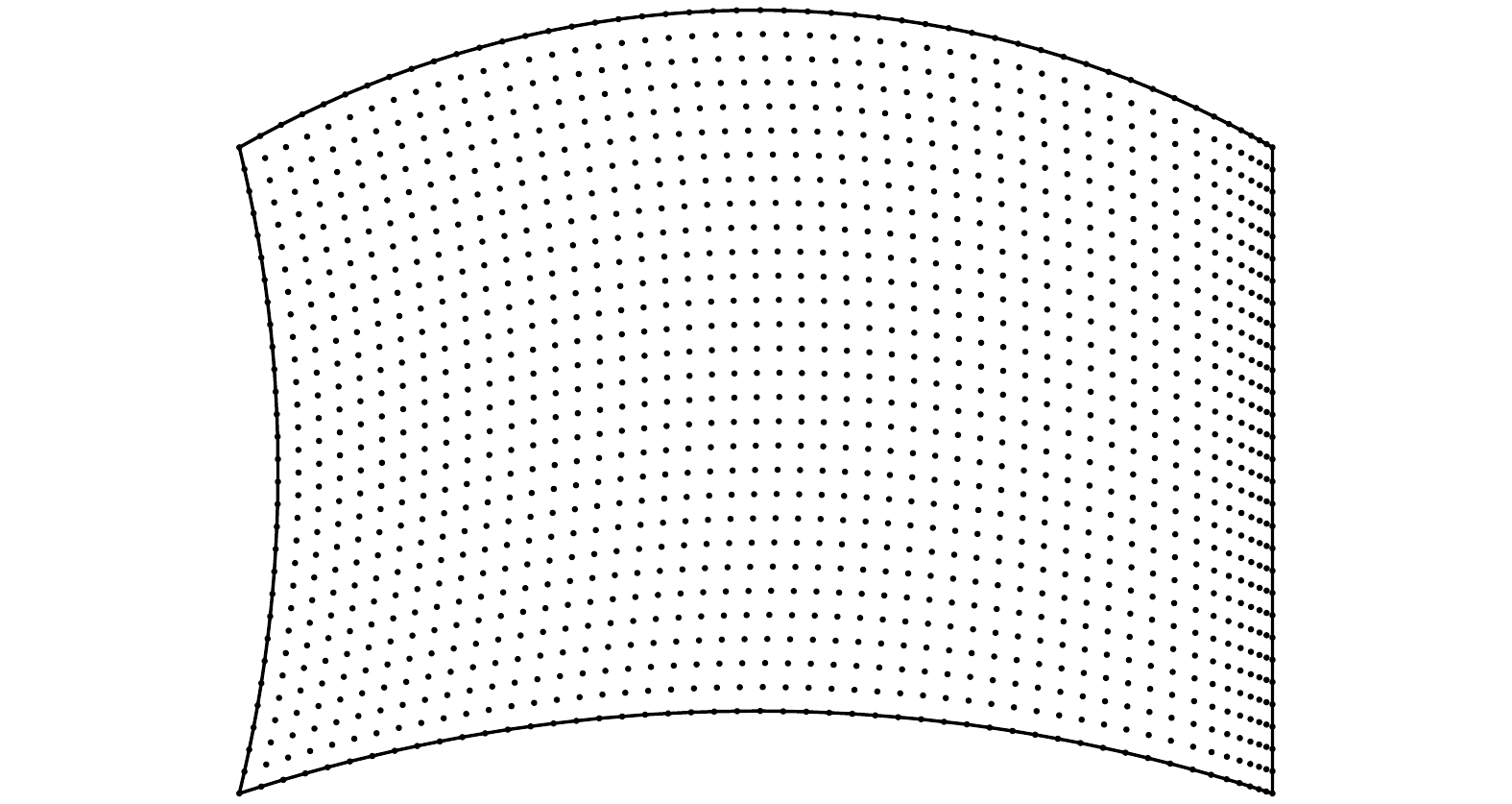
 DownLoad:
DownLoad:

